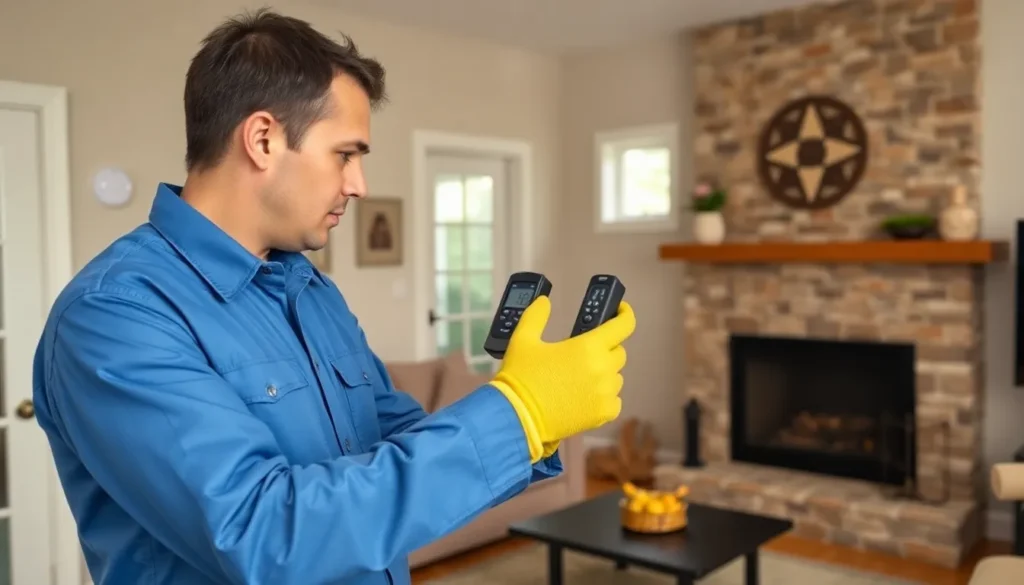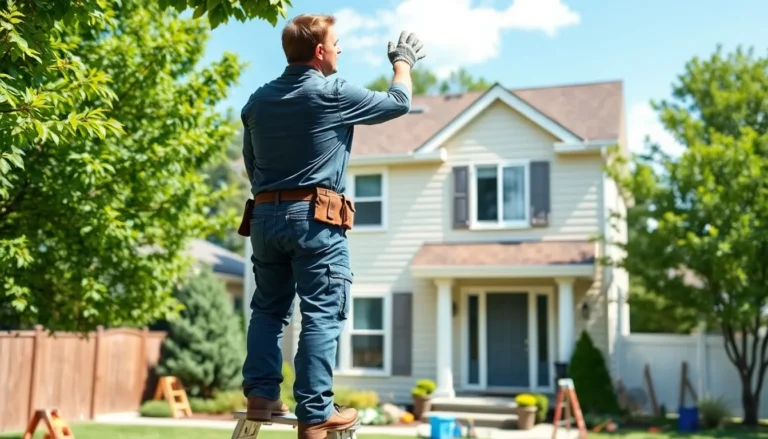Every year, thousands of homes unknowingly play host to a silent and deadly guest: carbon monoxide. This odorless gas sneaks in when you least expect it, turning cozy nights into potential nightmares. But fear not! Regular carbon monoxide checks can be your home’s secret weapon against this invisible foe.
Table of Contents
ToggleImportance Of Carbon Monoxide Checks
Regular carbon monoxide checks play a vital role in ensuring safety by identifying the presence of this silent danger. Understanding both the health hazards and legal requirements surrounding carbon monoxide is essential for home safety.
Health Hazards Of Carbon Monoxide
Health risks from carbon monoxide exposure range from mild symptoms to severe consequences. Symptoms like headaches, dizziness, and confusion often signal potential poisoning. Prolonged exposure can lead to unconsciousness or death, especially in vulnerable individuals such as children and the elderly. According to the Centers for Disease Control and Prevention (CDC), over 400 people in the U.S. die from unintentional carbon monoxide poisoning each year. Recognizing these health hazards emphasizes the need for routine checks to ensure air quality and prevent detrimental effects on health.
Legal Requirements And Regulations
Legal requirements for carbon monoxide detectors vary by location but typically underline the importance of installation and maintenance. Many states mandate that homes with fuel-burning appliances have functioning carbon monoxide detectors. Regulations often dictate placement of detectors outside sleeping areas and throughout the home. Fines can apply for non-compliance, reinforcing the need for adherence to local laws. Understanding these regulations can guide homeowners in safeguarding their properties and ensuring compliance with safety standards.
How Carbon Monoxide Checks Work

Carbon monoxide checks use specific testing methods to ensure safety in homes. These methods commonly include the use of portable or fixed detectors that measure carbon monoxide levels in the air. Technicians may also conduct ambient monitoring to ascertain whether high levels exist in an environment. Many detectors activate an alarm when carbon monoxide concentrations reach dangerous levels, providing immediate alerts for inhabitants.
Regular checks are essential for maintaining a safe living environment. Experts recommend performing carbon monoxide checks annually, particularly in homes with fuel-burning appliances. Monthly check-ins on detectors ensure they function properly. During prolonged periods of use, such as winter months when heating sources operate more frequently, increased checks can be prudent. Compliance with local regulations typically prescribes specific frequencies for inspections, highlighting their importance in health and safety.
Benefits Of Regular Carbon Monoxide Checks
Regular carbon monoxide checks significantly reduce the risk of poisoning and ensure a safe environment. These checks play a crucial role in safeguarding health.
Preventing Carbon Monoxide Poisoning
Preventive measures against carbon monoxide poisoning depend on regular inspections. Identifying leaks in fuel-burning appliances before they become problematic is essential. Without proper checks, dangerous buildups can remain undetected, putting residents at risk. Over 400 annual deaths in the U.S. highlight the importance of this practice. Regular testing ensures early detection, allowing for prompt remediation actions. Getting professional assessments also helps educate homeowners on potential risks within their living spaces.
Enhancing Home Safety
Enhancing home safety involves more than just installing detectors. Regular checks establish peace of mind, knowing that the risk of carbon monoxide exposure is minimized. Effective systems alert occupants quickly, reducing emergency response times. Inspections reveal whether detectors are functioning properly, ensuring they work when needed. Most local regulations require compliance with inspection frequencies, which underscores their importance. Homes with fuel-burning appliances should prioritize these checks, particularly during colder months when heaters and fireplaces are in regular use. Maintaining a safe living environment is easier with consistent evaluation and updates on safety measures.
Common Solutions And Equipment
Routine carbon monoxide checks utilize various tools and methods. Two common solutions include carbon monoxide detectors and professional inspection services.
Carbon Monoxide Detectors
Carbon monoxide detectors serve as essential devices in homes. These units monitor air quality continuously, detecting dangerous levels of carbon monoxide. Many models feature audible alarms that sound when harmful concentrations are present. Installing these detectors near sleeping areas enhances safety, allowing occupants to wake up during a hazardous situation. They need routine testing to ensure functionality; monthly checks guarantee reliable operation. Detectors often require battery replacements every six months to maintain efficiency. Homeowners should check local regulations to determine specific installation requirements, as laws vary by location.
Professional Inspection Services
Professional inspection services provide thorough assessments of fuel-burning appliances. Technicians conduct ambient monitoring to identify potential hazards and check detector performance. Many service providers offer annual inspections, which align with expert recommendations for safety. During these evaluations, specialists detect leaks and measure carbon monoxide levels accurately. Results from these inspections inform homeowners about necessary repairs or improvements. Engaging professional services reduces risks associated with undetected carbon monoxide buildup. Regular inspections significantly enhance overall home safety, ensuring compliance with local regulations.
Regular carbon monoxide checks are essential for maintaining a safe home environment. By identifying potential hazards early on, homeowners can prevent serious health risks associated with carbon monoxide exposure. The implementation of effective detection systems and adherence to local regulations not only enhances safety but also provides peace of mind.
With the potential dangers lurking undetected, prioritizing these checks is a proactive step toward safeguarding loved ones. Engaging professional inspection services further ensures compliance and thorough assessments, making it easier to address any issues before they escalate. Staying vigilant about carbon monoxide safety is key to enjoying a secure and comfortable living space.




